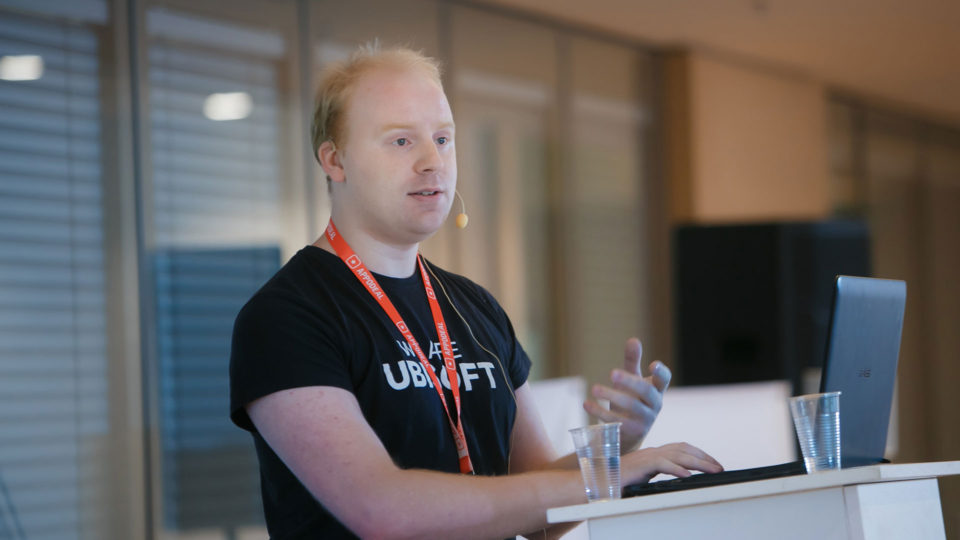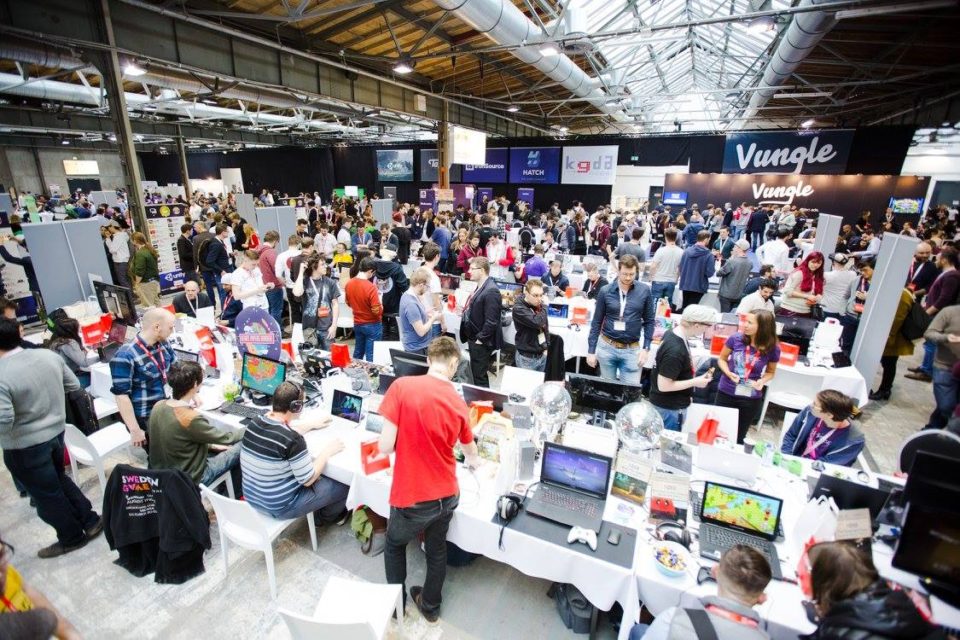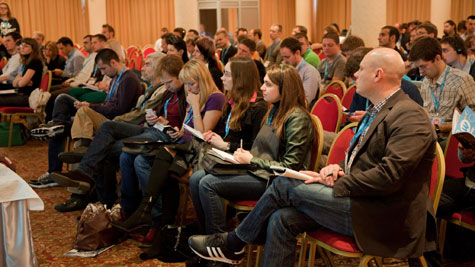Each medium has its own unique traits that allow for creating really strong emotional bonds between the consumer and the work of art. In games that’s interactivity – controls and mechanics. At Casual Connect Kyiv, a Game Designer at Ubisoft by the name of Stanislav Costiuc talked about the unique traits games can use to elicit feelings, emotions, and create strong bonds with players. Hear his full lecture entitled Show, Don’t Tell? Play, Don’t Show! below.
main
EventsIndustry
Casual Connect Announces Major Changes to Conference Rotation
The Casual Connect game development conferences are about to get even more accessible for professional developers everywhere. The conference’s parent organization, Casual Games Association (CGA), recently announced that they will begin rotating where their conferences take place in order to provide people in different regions with new opportunities to participate in the no.1 casual games development conference in the world.
Video Coverage
Publishers Speak: G5’s Vlad Suglobov, Alawar’s Alexander Lyskovsky and Big Fish’s Paul Thelen
The 2012 Casual Connect Kyiv conference was filled with energy as over 800 publishers, developers, and others involved in the casual games industry gathered at the RUS Hotel to network and learn. For seven years, Casual Connect has brought together talented professionals to enrich the industry with new knowledge and ideas. This year was no exception with over 50 sessions dedicated to cutting edge industry topics.
The Future of Casual Games is on Smartphones and Tablets
Vlad Suglobov, CEO of G5 Entertainment, narrowed the view to the future of smartphones and tablets during his session. Using current statistics, Vlad showed the prediction of growth for smartphones and tablets. He also provided advice for developers to succeed in the current industry. Using real-life examples, the success of F2P games were explored in this stimulating session.
Three Elements of the Game Universe: Platforms, Brand and Community
Alawar’s CEO Alexander Lyskovsky looked to the future during his session. While game factors are important to a future game’s success, he also touched on non-gaming factors that lead to success, such as, the community. Having an active role in creating a community of game industry professionals in Eastern Europe, Alexander knew how important community can be to a long-term brand. This inspiring session emphasized the importance of foresight.
Making Money With Games - What’s Real Today
Paul Thelen, Founder and CEO of Big Fish, started off the conference by highlighting new “real” opportunities as well as the current thriving business models that Big Fish have seen. The session was filled with sound advice based off real examples and data from Big Fish. Paul combatted the growing fear of the industry’s slow death by pointing out that it is just a matter of changing from past success to current success. Successful content and platforms were also addressed in this thought-provoking session.
These are just a few of the many motivating sessions from Casual Connect Kyiv 2012. To hear from more speakers, visit the Casual Connect webpage or the Casual Connect YouTube channel.
Studio Spotlight
Studio profile: Nikitova LCC in Kyiv
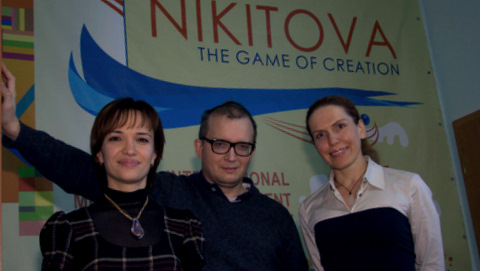
Nikitova is not only one of the first art outsourcing studios in the Ukraine, but is now considered to be the largest game development services company in the Ukraine. They have built up quite the rep sheet with companies such as EA, Activision, Sony, Namco Networks, Oberon Media/Iplay, Trion Networks and Triumph Studios as their clients. Their main activities are not only art and engineering outsourcing for well-known titles, but also creating full games for PC and consoles. With the company prepping up to release a new line of casual downloadable titles themselves and a possible studio in China, we had the pleasure of paying their Kyiv studio a visit and find out how the company is dealing with moving from outsourcing to distributed development, what it’s like to have their own game development academy, befriending China and have a true 50/50 male/female ratio inside the office.
Distributed development > Outsourcing
Outsourcing has become quite the dirty word in Eastern European countries, even though it’s been one of the main livelihoods of most game studios based there. “Most of the studios here, they use outsourcing as help, to stay alive,” VP of Strategy Maxim Zasov says. At Nikitova’s offices, everyone has stopped talking about outsourcing and have started calling their work distributed development instead. “We feel that outsourcing is evolving into a more mature form of development service we see as distributed development,” President and CEO Olya Nikitova adds. “Clients started to realize that treating your development services partner as a part of their team will add a great value to the quality of the product . In certain ways, the team has to feel a sense of belonging.”
Vice president of production Michael Vatsovskiy has enjoyed the use of the word even more. His team has had a great boost in motivation seeing their names actually appear in the credits of some western games they’ve done distributed development on. “We are still something like 7 or 8 years behind software outsourcing,” he admits. “But with distributed development, in a production sense, we are partners now. It’s great for the team’s motivation.”
The Nikitova academy
In 2006, Olya Nikitova decided to open a small game development academy to create more educational opportunities for young people in Ukraine that wanted to explore game development and become a part of an exciting industry. “Introducing something like an academy gives kids a chance to have a choice,” she explains. “If you compare it to the other job markets, game development itself is one of the highest paid industries here.” Nikitova’s academy is currently schooling 30 students at a time, testing people for their aptitude on both art and programming.
“We feel responsible for the lack of support for education in game development field on the government side,” she adds. “We aim to be a good example of a nice place to work, develop yourself and get excellent career growth opportunities.”
If you can’t beat em…
With outsourcing to China becoming popular, even Nikitova is feeling pressure from the East. “They put a lot of money into education, and that counts as government-financed help,” President and CEO Olya Nikitova says. “So, that by itself requires us to be on our toes.” The challenge to keep costs down and retain a high-quality standard has become even bigger, especially since Ukrainian studios lack any kind of government support or quality education for game developers at all.
Aware of the quality of education and work in China, even an Ukrainian company like Nikitova is strongly considering to create a presence in China. The decision to open an office in China within the next six months is already on the table. “There are also advantages here [in the Ukraine] and the cultural connection is much closer to western clients,” Zasov adds. “You don’t compete with China, you just open up there.” The goal is to find a company that can complement their own skills and allow them to create a stronger international organization. “It’s a tendency for outsourcing companies to start and understand that we are stronger together than we are separately.”
Collaboration in Kyiv
According to many Ukranian developers, there appears to be a certain Ukrainian mentality still subconsciously active in the minds of some game studios that sharing information and being collaborative while exchanging ideas and visions is a bad thing. Five years ago, Olya Nikitova and some other developers took the initiative to start an IGDA chapter in Kyiv. “The idea of the IGDA chapter was to bring down those fences between studios and talk to each other to find the benefit,” she explains. “Anything that has a collective origin is always better than being individualistic. That has been my message for over 10 years.”
For Olya Nikitova, it has become clear that in this day and age a collaborative attitude would allow her countrymen and women to achieve greater things than ever before. “You cannot stay by yourself, you need to look around,” she argues. “It’s all about being social. It’s a social environment, a social network: games for everyone.”
Girlpower
Being at the head of her own company for almost 10 years, Olya Nikitova once took the plunge into the game industry after become tired or running a foreign exchange company. “I quickly realized it wasn’t my cup of tea,” she says. “I just like creativity and was looking for an industry that can get me inspired.” Applying her knowledge of how to start and run a business she aimed at game development industry with the goal of becoming a premium services provider and learn from the best game development companies creating best practices in the area game development outsourcing. The desire to learn has stayed with the company throughout its growth and has given Olya Nikitova the possibility to share attracts and fosters more female talent as well. The company possesses almost a 50/50 ratio of women in most of the teams in the company; a rather unseen feat for most western studios. “Being a female, and not being afraid to attract female talent, I have no reservation towards what females can do,” she says. ”The idea was to look at what women do best, because game development is such an abundant area where females can work.”
Olya Nikitova especially noticed the value of a woman’s touch in the growth of her own art department. “Especially on the texture side, certain types of modeling work, certain assets, women flourish, they’re just so good at it,” She says. “They have better eyes and a better sense of color. Intuitively, they’re better on many levels. […] I really like the fact that women want to work in game development and aim to support it on every level.”
Nikitova recently celebrated it’s decade long existence. With one of Kyiv’s largest studios sharing her name, Olya Nikitova aims to move the company forward by letting her employees learn new things, make new new friends, explore opportunities and create their own story in the world of games.
Press
Meet the press: Ukraine’s Alexander Ptitsa
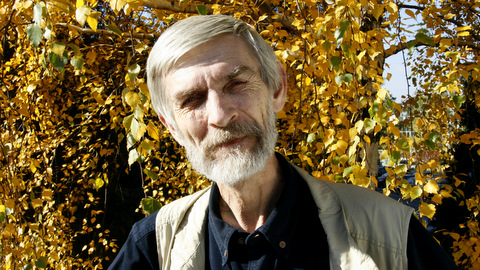
Heritage
Both of Ptitsa’s parents used to be well known journalists in their time. His father was the chief editor of a sports magazine and his mother was an editor at a magazine for Ukranian women. After graduating from Kiev State University with a Physics degree, Ptitsa used to teach information technologies at a pedagogical college and some other schools through-out the 80’s and early 90’s. While teaching young children about working with computers, Ptitsa paid a growing amount of attention to videogames. “I’m very curious about everything,” he says. “Since my childhood, I liked to acquire new information about everything in the world.” No wonder computer games quickly became one of his hobbies, besides of his passion of teaching. He started playing old adventures on the PC such as Leisure Suit Larry and Monkey Island.
In the Ukraine, the first console that were massively available were cheap clones of the 8 Bit Nintendo Entertainment System. Ptitsa bought it for his daughter, but ended up playing it together with her. The Sega Megadrive followed soon. In those times, the only games that were available in the Ukraine for both consoles and PC were all pirated. Step by step, legal versions started to appear in stores.
“When the Internet started to become available my country, I was hooked,” Ptitsa admits. “It was my dream to have access to all that information. In 1996, he got his first Internet connection.” In the spring of 1997, Ptitsa made his first website, which was called ‘webbird’. It also became his first online nickname, reflecting his own last name which means ‘bird’ in Russian. He used his website to review news and interesting topics from the Internet on a weekly basis and visitors kept coming back for more. “At that time in the Russian language segment of the Internet, there was a trend to post reviews of the web,” Ptitsa explains. “Some reviewers even created kind of trade union, called Ezhe.ru.”
Pioneering
Most of the websites that became popular alongside’s Ptitsa’s own were also run by hobbyists. In autumn of 1997, Ptitsa realized a lot of people were interested in videogames as well and started devoting himself completely to the topic. “There wasn’t enough reliable information about games, so I started a game site called Gammer,” Ptitsa explains. “It was one of the first Russian language game sites, along with quake.spb.ru and some others. I updated the site regularly and got in touch with some of the Russian and Ukranian developers.” Alexander’s writing did not go unnoticed at Ukraine’s biggest IT-magazine publisher ITC publishing.
ITC publishing already knew Ptitsa from his online activities and made him a good offer to join their editorial staff. He was invited write some game reviews for a magazine called ‘Computer Review’, where also he ended up working the pilot version of Domashny PK (PC for Home). Ptitsa has been working for the latter magazine ever since. ITC also started to send Ptitsa to various international events around the world, allowing him to expand his international network and getting some of the first interviews with key figures in the game industry that were published in Russian. Among them were BioWare’s Ray Muzyka, Quantic Dreams’ David Cage and others.
Seeing the industry grow
In 1998, Ptitsa would also end up helping GSC Game World receive their first taste of international fame. The Kyiv based game studio would later become known for their Cossacks and S.T.A.L.K.E.R. franchises. “When the GSC Game World CEO Sergiy Grygorovych decided to visit Milia 1998, a big multimedia and game show in Cannes, he invited me as his interpreter and for PR,” Ptitsa recalls. “He didn’t know English and he wasn’t able to explain the features of the game to the people who were going to see the game at his small stand.”
Ptitsa gladly joined the young CEO to get the first version of Cossacks the attention it needed. One of the first things Ptitsa did, was bring the people from Gamespot to Sergey’s booth to see the game. Ptitsa was also able to have Microsoft’s Ed Fries, people from Infogrames and other publishers bring a visit to GSC Game World’s small stand. The rest is history.
The Ukranian games market
Though the game market in Ukraine has been plagued by piracy for over a decade, Ptitsa has seen an increase of interest in the purchase of legal copies. “Legal games give consumers more possibilities for DLC, online gaming and so on,” he explains. “In the console sector, the situation is rather strange,” he admits. Ptitsa would later show me some game shops, where both the legal and pirated versions are displayed side by side. The latter, of course, being rather cheaper. While there is no official market for the Xbox 360 and Wii in the Ukraine, both consoles can be bought with mod-chips already installed inside of them.
The Playstation 3, thanks to its disc-protection not having been cracked yet, is the only console of which only the original games are sold of. Interestingly enough, this has resulted prices being higher for Playstation 3 games than in the west. As far as Ptitsa has seen and heard himself, the majority of consumers still prefer pirated copies. “The PSP is more popular than the DS here,” Ptitsa adds. “ I think that traditionally our gamers like good graphics and some of them prefer good graphics over good gameplay. That’s why a lot of them don’t even know about the great games on the DS.” Because of the higher prices of original games and his dislike of pirated versions, Ptitsa himself prefers to buy his games during his visits abroad and from online stores.
Ptitsa’s magazine has quite the challenge ahead of them. Recently Ptitsa is no longer a regular member of the Domashny PK (PC For Home) staff, but has been assigned to a freelance position instead. ITC Publishing took that measure in order to become more profitable.
Studio Spotlight
Studio Spotlight: GSC Game World in Kyiv
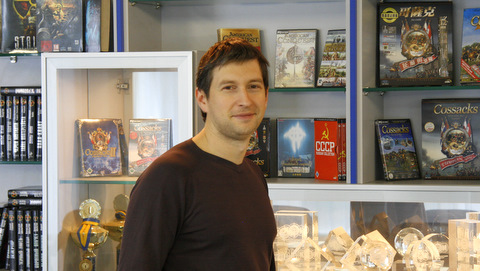
It’s not easy to be the most popular developer in Ukraine. GSC Game World not only attained international recognition through their Cossacks and S.T.A.L.K.E.R. franchises, but the studio also quickly became notorious for having educated many young Ukranian game developers. GSC’s former employees can be found in many game companies across and outside the Ukraine. We sat down with GSC Game World’s PR director Oleg Yavorsky to talk about GSC’s past, present and future.
Walking through the main hallway of GSC Game World’s offices outside the city center of Kyiv, it was hard to ignore the sewing workshop where two ladies were vigorously working on some type of clothing. “That’s our new line of S.T.A.L.K.E.R. clothes,” Yavorsky tells me. A few minutes later, he’s trying on some of the ‘prototypes’ to show off GSC’s new line of fashion for fans and community of the S.T.A.L.K.E.R. franchise. CEO Sergiy Grygorovych went beyond the call of duty to show off the early clothing prototypes to the community, doing a damn fine job at it if you ask us!
Pissing off Blizzard
Grygorovych started the company at the young age of 16 in 1997, with a small team of friends that were around the same age. Struggling with slow computers and little access to games, the team tried to find whatever they could get their hands on. “Back then, there was a big desire and ambition to create our own games,” Yavorsky says. “That was the ultimate goal.” Young Grygorovych and his team got their first jobs building multimedia encyclopedias, translating other games and making edutainment titles to create their first capital.
“Our boss is a big fan of strategy games so that was our first big desire,” Yavorsky says. Following the releases of games such as Warcraft 1 & 2 and Age of Empires, Grygorovych’s ambition was to create a new kind of game engine that would become the equivalent of Warcraft 3. “We actually took the graphics from Warcraft 2 and put it into our own technology, which allowed us to have 8000 humans and orcs on the screen at the same time,” Yavorsky says. “In the first Age of Empires, you could have 50 units on a screen and the second allowed around 200, but our engine allowed 8000 units on the screen at the same time. We tried to approach Blizzard with this idea and offer them our service, but they didn’t treat us seriously and even got offended.”
The Cossacks dance
The idea of creating the next Warcraft was pushed aside. “We had an idea of creating a historical real-time strategy game based on that engine,” Yavorsky says. “We wanted to be proud of our country and it seemed a good opportunity to showcase the country internationally, because not many people knew what Ukraine was.” GSC Game World would go on to involve their national pride and Ukrainian heritage into what would later become Cossacks. In 1998, Sergiy Grygorovych rented a small booth at the Milia multimedia and game show in Cannes. Joined by well known Ukranian new media and game journalist Alex Ptitsa, Grygorovych showed the Cossacks demo on one small computer. The small demo only featured the three nations of Russia, Ukraine and Europe (as one nation). The technology was so good, that it attracted a lot of attention from publishers. “For Sergiy, as he recollects now, that was the best show,” Yavorsky admits. “He was only 16 years old and around him were all the big companies like Blizzard, Activision, Electronic Arts, Atari and so on. He was overwhelmed and impressed.”
However, nobody would make an offer to Grygorovych because his company was a start-up. “Many companies were kind of reluctant to make a serious deal,” Yavorsky recalls. “Ultimately, we ended up signing with a start-up publisher from Germany called CDV. We were about 25-30 people, and they were about the same size.” CDV would go on and suggest multiple improvements to Cossacks, including growing the number of nations to 16.

“Cossacks was just on time and the right thing to offer to the market.” Yavorsky adds. The game would result in both CDV and GSC Game World becoming known around the world. The game was originally built by just 12 people at GSC headquarters. As a start-up, the company was also working on two other projects, a racing game called Hover Ace and a first person shooter named Venom: Codename: Outbreak. “We didn’t know which game would be our best hit,” Yavorsky admits. “At that time, we though it would be Hover Race, but Cossacks would eventually become number one.”
After Cossacks, GSC continued to work on the other two. After that, the company decided to stick with working on strategy games and first person shooters.
“We were lucky to have every second title we released be successful for us,” Yavorsky says. GSC would eventually end up only specializing in developing real-time strategy and first person shooters, resulting in sequels to Cossacks and the S.T.A.L.K.E.R. franchise.
A warm nest
The international and national recognition GSC has received in the years since Cossacks was released did not only bring in a lot of money, but also new people. As the Netherlands once had their Guerrilla studios, Germany had Crytek and the Ukraine had GSC Game World. Once the word was out that GSC had plans to grow, young Ukranian game makers flocked to the company trying to get a job working on the Cossacks of S.T.A.L.K.E.R. franchise.
“By now, if you take basically any game development studio here in Kyiv they will have some of the people that at some point used to work for us,” Yavorsky argues. Throughout the 7-year development of S.T.A.L.K.E.R.: Shadow of Chernobyl, over 100 people were involved in the production of the game. “Very few people ended up staying throughout those years of trial and error.”
Alright stop, S.T.A.L.K.E.R. time!
The development of S.T.A.L.K.E.R.: Shadow of Chernobyl was plagued by hardships, delays and other struggles. “The last couple of years were very hard,” Yavorsky admits. “People were obviously tired of the very long work on the same project.”
When S.T.A.L.K.E.R. was first announced, the game instantly received a lot of attention by the international game press. “We became instantly famous, expected and awaited because it was revolutionary in many respects,” Yavorsky recounts. “Internally, it was prestigious to work on S.T.A.L.K.E.R.. We had two big teams at that time, one strategy team and one action team that worked on S.T.A.L.K.E.R.. I think, internally, the strategy team was a little bit envious of the S.T.A.L.K.E.R. team, because they were working on such a top level project.”
According to Yavorsky the sense of prestige also had its downturns. The heightened ambition and the desire to put everything in one game resulted in the game becoming bloated. “Because of our lack of experience to release such a big project, a lot of errors and mistakes were made,” Yavorsky admits. By the fifth year of development, after postponing the title several times, Yavorsky’s job as PR director wasn’t getting any easier. The community who once supported and loved GSC Game World, started to turn against the company. “We saw them already hating us, for not releasing the game for so many years and constantly promising to release it,” Yavorsky says. ”There was a lot of pressure both internally, from the outside and the publisher who wanted to get the game out. At some point, we were even on the verge of breakdown and closing the project. It was kind of a miracle to have the forces left internally to finish the game completely and get it out.
The delay caused GSC to perform some serious cuts to S.T.A.L.K.E.R. In the last year of its development, THQ sent a producer to help. “His basic role was to get the project finished,” Yavorsky says. The possibility to drive vehicles, certain monsters and even entire levels were consequently cut from the game, only to later be uncovered inside the game’s code by fanatic modders. “We eventually managed to release a unique atmosphere which still made S.T.A.L.K.E.R. stand out from other games,” Yavorksy adds. With such a hardship behind them, the core team that remained continued onward to create the latest two S.T.A.L.K.E.R. titles, Clear Sky and Call of Pripyat. “With the later S.T.A.L.K.E.R. releases it was a lot easier for us because the team was already well prepared for such a game,” Yavorsky says. “They knew it well and the engine was stable, which made us much stronger.”
As with many other game studios in the Ukraine, GSC had the daunting task during S.T.A.L.K.E.R. of educating their own developers. “We don’t have any universities that teach you game design,” Yavorsky says.”The industry here is at least 10 years younger than other parts of the world. Ultimately, we had to learn by ourselves. Our personal approach is something that we developed through our own designs and experiments.”
National pride
Both the Cossacks and S.T.A.L.K.E.R. franchises show off GSC’s focus on their own home turf and heritage. According to Yavorsky, it was always obvious to base the themes of their games on their own culture and country. “We grew up here, we know how things work here and we know what the world looks like here,” Yavorsky argues. “We don’t know much about LA or London or other parts of the world.”
The dark and gloomy style of S.T.A.L.K.E.R. took many people by surprise and sparked a lot of curiosity. GSC took a lot of effort in the game to offer people a look at the areas surrounding the Chernobyl nuclear power plant, reconstructing some of the areas into the smallest detail.
Though the palet and art style sparked interest for some games and definitely set them apart from their Western counterparts, it wasn’t always so well received. GSC was contracted by Ubisoft to work on a tie-in game for the Alexander movie starring Colin Farrell, but Ubisoft wasn’t satisfied with GSC’s choice of palet. “Ubisoft believed the picture on screen looked very gray and gloomy, which is, by the way, a very common tendency for local games,” Yavorsky says. “They look very dark. It’s probably some kind of national thing, how our artists see color. Maybe because our lives used to be so gray and gloomy we like darker kinds of things. So Ubisoft had to bring in their own artist who used to correct the gamma on screen and make the picture look nicer and brighter, more appealing to Western players.”
S.T.A.L.K.E.R.S. vs. pirates
Catering so much to their own country and Eastern Europe, GSC has also had its share of problems because of piracy. The company’s games are released much earlier in Eastern Europe than in the West for that specific reason. “We actually get all our pirated games from the west,” Yavorsky says. “Because they get delivered to the western stores by the publishers like two weeks earlier to end up on the shelves at retail stores.” The early availability of games at retail causes the game to be cracked before it would even be released in the west. “Then by the time it’s released in the west, we would already have it here on the market sold, pirated and translated into Russian,” he adds.
When receiving western publishers at their offices, Yavorksy and his team would regularly make fun of them with their own titles. “We would be presenting their pirated games and very often they would be holding a game that isn’t out on their own market yet and our players can already buy and play.”
The earlier release of GSC’s games in Eastern Europe also only features the Russian language, limiting any use of the game for any westerners that would consider downloading the game. Catering to a very fanatic community of Stalker fans called ‘Ya Stalker’, (http://yastalker.com/home.php) Yavorsky also noticed a growing amount of support from the local fans. “We saw a lot of people on forums blaming other people for not buying a legal copy to support the local developer,” he says. “There was some kind of local pride.”
Fighting piracy is never an easy thing in the Ukraine, but even GSC has been directly involved in the crackdown of pirates. “Sometimes we succeed, actually doing some successful raids with police to seize a batch of pirated discs,” Yavorsky says. “For the police to do that, they need a lawsuit case. They need the right-holder to actually claim his rights were being violated. So we need to be involved directly to get this help.”
The bigger problem GSC and other developers are facing is that people frequently can not distinguish the legal copy from the elaborately designed illegal one. Sometimes copies are even completely mimicked up to the exact cardboard box casing, validation stickers, booklets and extra’s. “The local pirate industry has been very mature, it’s not a problem for them,” Yavorksy argues. “They will just fake it being a licensed copy.” As a result, players have repeatedly contacted GSC with complaints about the lack of a legitimate key in their game to access the online capabilities, only to be pointed to the illegal nature of their copy.
Beyond S.T.A.L.K.E.R.
Even for GSC, the need to put their own country and fellow game developers on the global map has become very important. As one of the bigger studios in the Ukraine that grew out of an ambition and desire to learn, new talent is constantly needed to fill the ranks.
“You have to train a new person to fit in the team, to get to know the technology, understand the engine, work with our own technology, instruments and tools,” Yavorsky says. “And you have to find people willing to learn and master it. So of course we have to sometimes baby-sit our new personnel, but that’s the way it happens.” Even today, many new game studios are still founded by people leaving bigger companies like GSC to find their own fortune and fame. It’s the circle of life for game developers in many Eastern European countries that lack the necessary government support and education. “We want the Ukraine to become a center for the production of games, special effects for the movie industry needs,” Yavorsky says. ”Because the talent is definitely here and we have the experience.”
In the meanwhile, the S.T.A.L.K.E.R. franchise is now reaching a peak of attention around the world. GSC Game World is making good use of it by promoting S.T.A.L.K.E.R. novels, a TV series pilot and even a clothing line. With a brand new engine specially intended for their S.T.A.L.K.E.R. 2 project currently in development, some developers at GSC are also looking forward to new ideas and projects to challenge themselves creatively once more, including Yavorsky himself. “I personally don’t want GSC being associated only with S.T.A.L.K.E.R., because we have so many other ideas and projects and titles,” Yavorsky argues. “Personally, I’d love to see Cossacks back in development.”
S.T.A.L.K.E.R. 2 is currently in development by GSC Game World and has been scheduled for release in 2012.
Studio Spotlight
Studio Spotlight: Vogster Entertainment in Kyiv
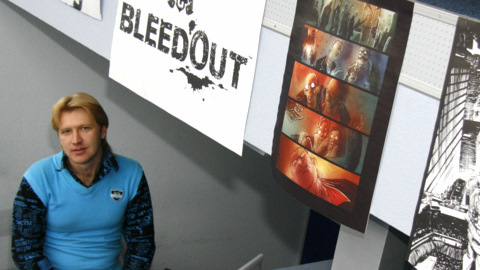
Studio Spotlight
Studio Spotlight: Frogwares in Kyiv
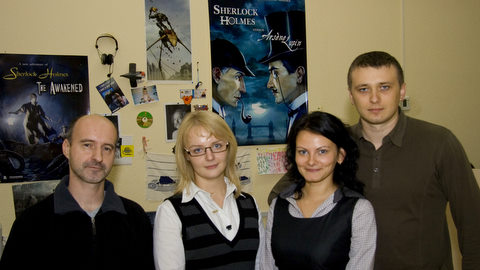
Celebrating a full decade of development this year, Frogwares has become one of the largest independent game development studios in the Ukraine. Though they’re known for their multi-platform adventure titles starring Sherlock Holmes and Doctor Watson, their new ventures into casual games and even an MMORTS are just getting the momentum they deserve. We paid Frogwares’s studio in Kyiv a visit and found out how the company is dealing with all these new projects, while still sticking to their adventure game roots.

